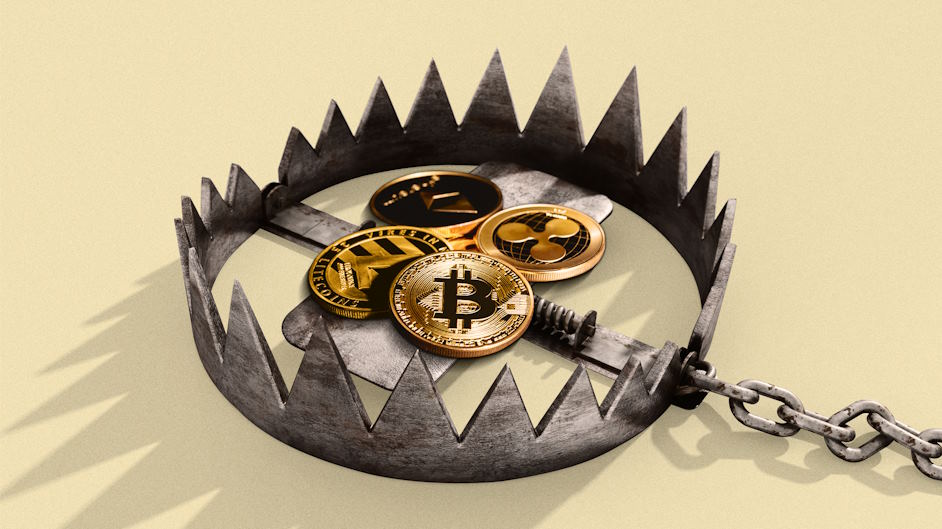
The digital token market has revolutionized the way we perceive and interact with finance. With the rise of cryptocurrencies, utility tokens, and security tokens, individuals now have the opportunity to participate in a new era of decentralized transactions and investments. However, along with this exciting growth comes an alarming increase in scams and fraudulent activities. As more people enter the digital token market, it becomes crucial to equip oneself with the knowledge and tools to spot and avoid scams.
Common Scams in the Digital Token Market
The rapid growth of the digital token market has not only attracted legitimate investors but also opportunistic scammers looking to exploit unsuspecting individuals. Understanding the common scams prevalent in the digital token market is essential for protecting yourself and your hard-earned money. Let’s explore some of the most prevalent scams you should be aware of:
- Ponzi schemes and pyramid schemes: These fraudulent schemes promise high returns on investment by recruiting new participants. However, the profits of early investors are paid using the funds from new investors, creating an unsustainable model that eventually collapses, leaving many with substantial losses.
- Fake initial coin offerings (ICOs): ICOs are a popular way for projects to raise funds by issuing tokens to investors. Scammers take advantage of this by creating fake ICOs, complete with impressive whitepapers and enticing promises, to lure investors into sending their funds. Once the scammer has collected a significant amount, they disappear, leaving investors with worthless tokens.
- Pump and dump schemes: In pump and dump schemes, scammers artificially inflate the price of a digital token by spreading false information and creating hype. Once the price reaches a peak, the scammers sell their holdings, causing the price to crash, leaving unsuspecting investors with substantial losses.
- Phishing attacks and fake websites: Scammers use phishing attacks to trick individuals into revealing their private keys or login credentials. They create fake websites that resemble legitimate cryptocurrency exchanges or wallets, and when users enter their information, the scammers gain access to their accounts, allowing them to steal funds.
Red Flags to Look Out For
When it comes to investing in the digital token market, it’s crucial to be on the lookout for red flags that may indicate potential scams. By recognizing these warning signs, you can protect yourself from falling prey to fraudulent schemes. Here are some common red flags to be aware of:
- Promises of unrealistic returns: If an investment opportunity guarantees unbelievably high returns with little to no risk, it’s likely too good to be true. Scammers often entice potential investors with extravagant promises, exploiting their greed and eagerness to make quick profits.
- Lack of transparency and unclear whitepapers: Legitimate projects provide detailed and transparent whitepapers that outline their goals, technology, and roadmap. If you come across a project with a vague or poorly written whitepaper lacking essential information, it should raise suspicion.
- Poorly designed or suspicious websites: A professional and trustworthy project would invest in a well-designed and user-friendly website. If you encounter a website that appears amateurish, contains grammatical errors, or lacks proper security measures, it may be a warning sign of a scam.
- Unverifiable team members or advisors: Genuine projects have a team of experienced professionals and advisors who are easily verifiable through their credentials and online presence. If the project’s team members or advisors cannot be authenticated or have no digital footprint, exercise caution before investing.
Tips to Avoid Scams in the Digital Token Market
Navigating the digital token market can be a daunting task, especially with the prevalence of scams and fraudulent activities. However, by following these essential tips, you can significantly reduce the risk of falling victim to scams and make informed investment decisions:
- Do thorough research before investing: Take the time to thoroughly research the project you’re considering investing in. Investigate the team behind the project, their experience, and track record. Look for reviews and feedback from reputable sources to gauge the project’s reputation and credibility.
- Verify the legitimacy of the project and team: Verify the authenticity of the project and its team members. Check their social media profiles, professional backgrounds, and any past projects they have been involved in. Look for credible third-party endorsements or partnerships that add credibility to the project.
- Check for regulatory compliance and licenses: Ensure that the project complies with relevant regulations and holds necessary licenses or permits. Regulatory compliance adds an extra layer of legitimacy and protection for investors.
- Read and understand the project’s whitepaper: The whitepaper is a crucial document that outlines the project’s vision, technology, and implementation plan. Take the time to read and understand it thoroughly. Look for clarity, technical viability, and a realistic roadmap.



 FEED Token is a Blockchain Company. A team dedicated to enabling digital transformation through innovation in the Blockchain space. FEED Token’ global clientele has been consistently enraptured with its state-of-the-art business snowballing solutions across the Blockchain protocols.
FEED Token is a Blockchain Company. A team dedicated to enabling digital transformation through innovation in the Blockchain space. FEED Token’ global clientele has been consistently enraptured with its state-of-the-art business snowballing solutions across the Blockchain protocols. 